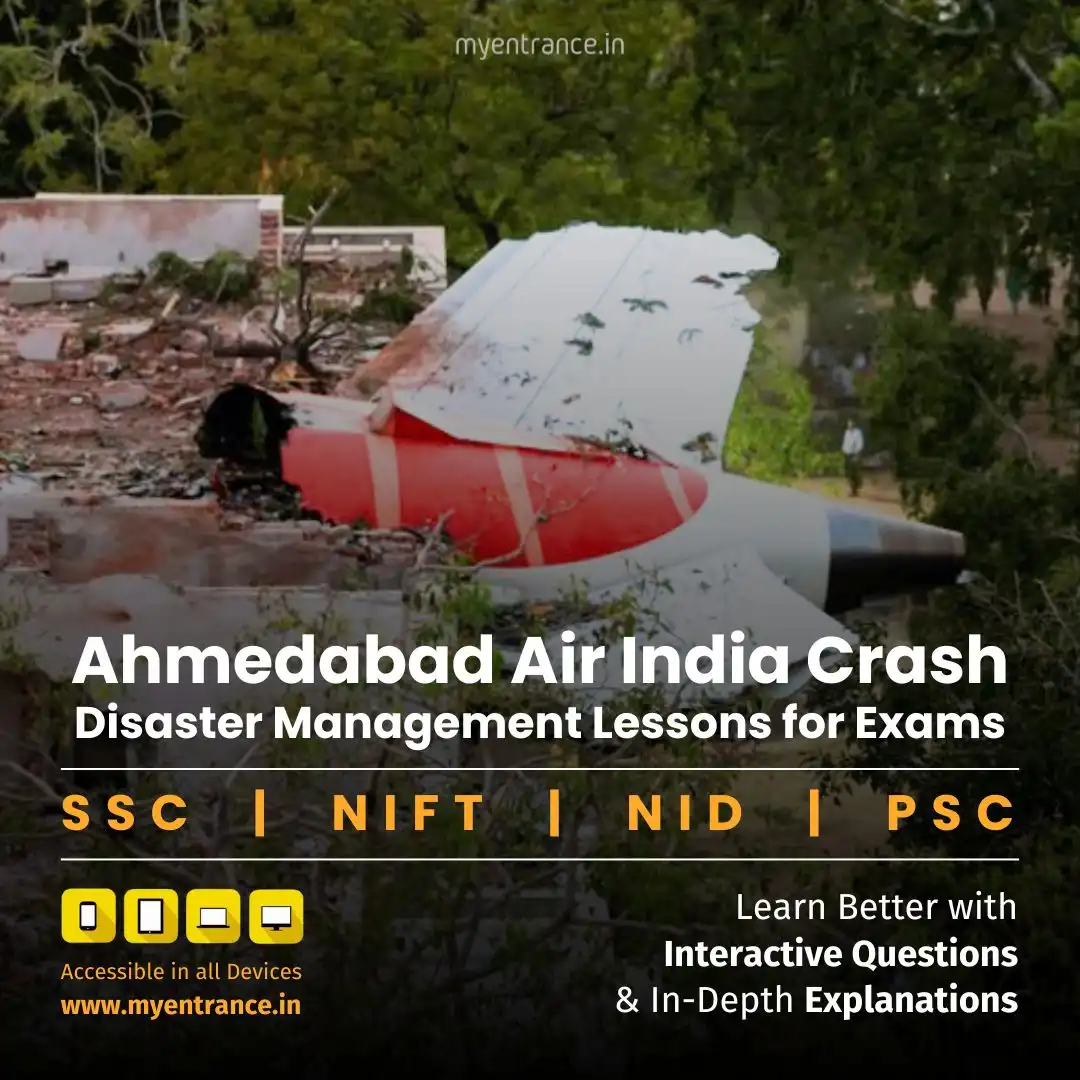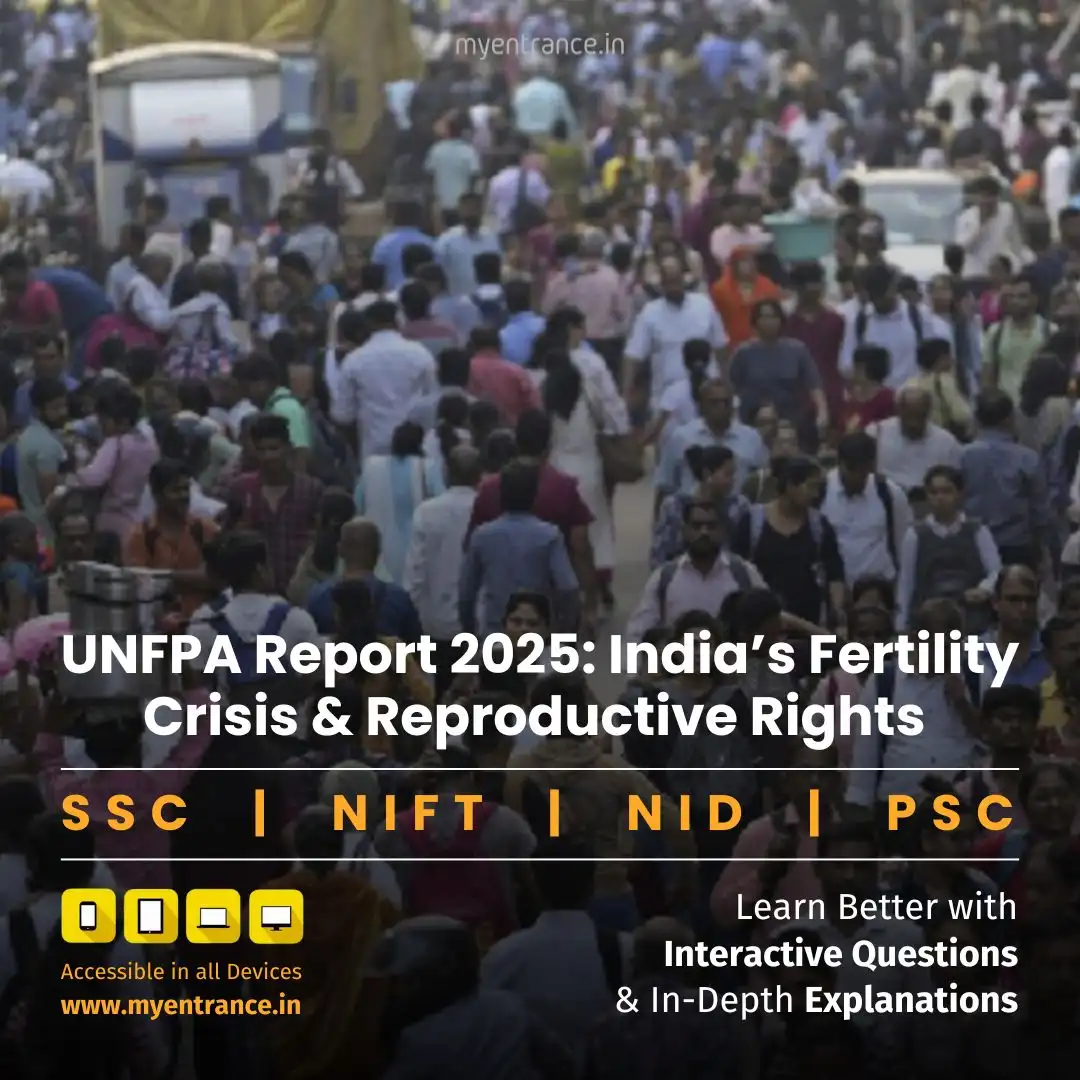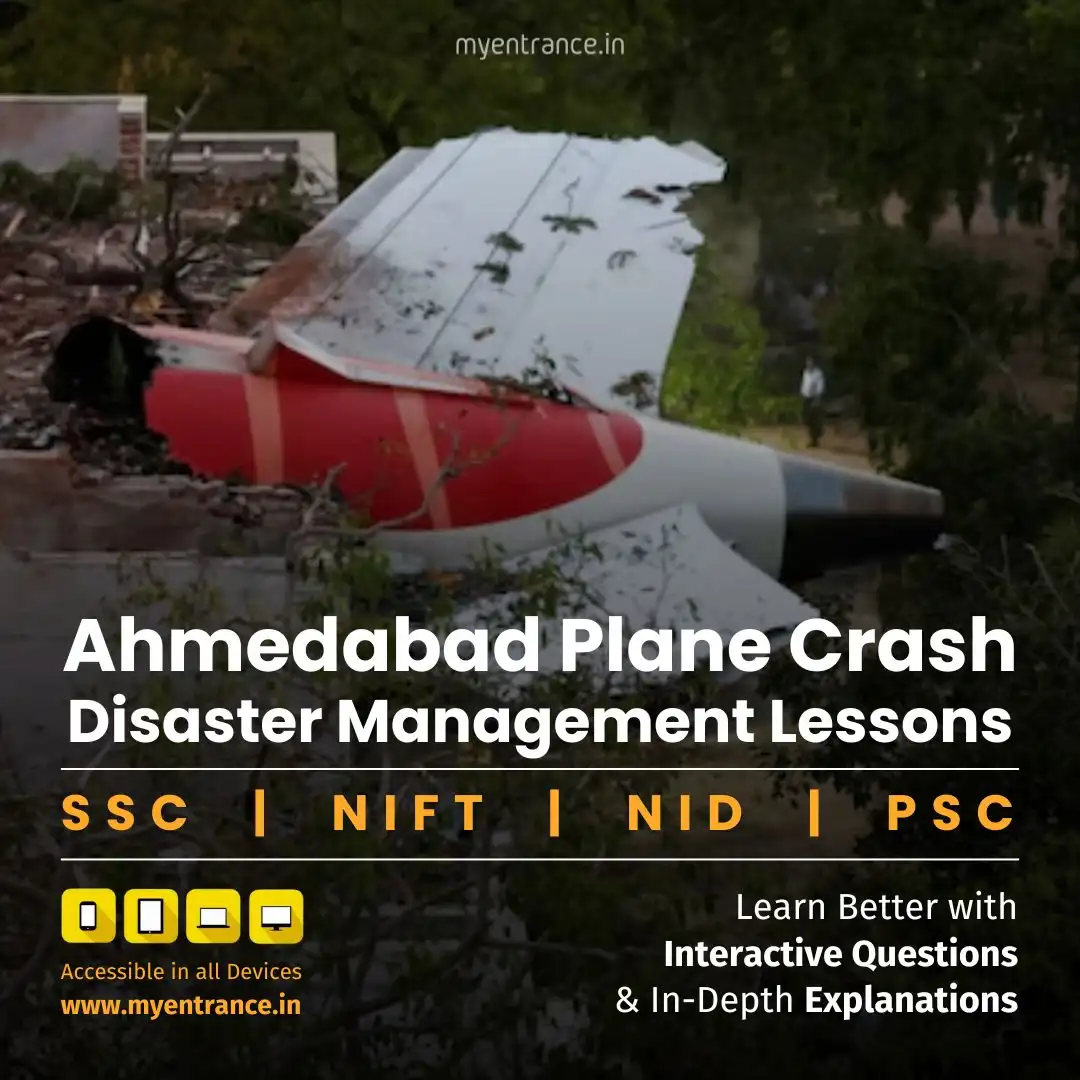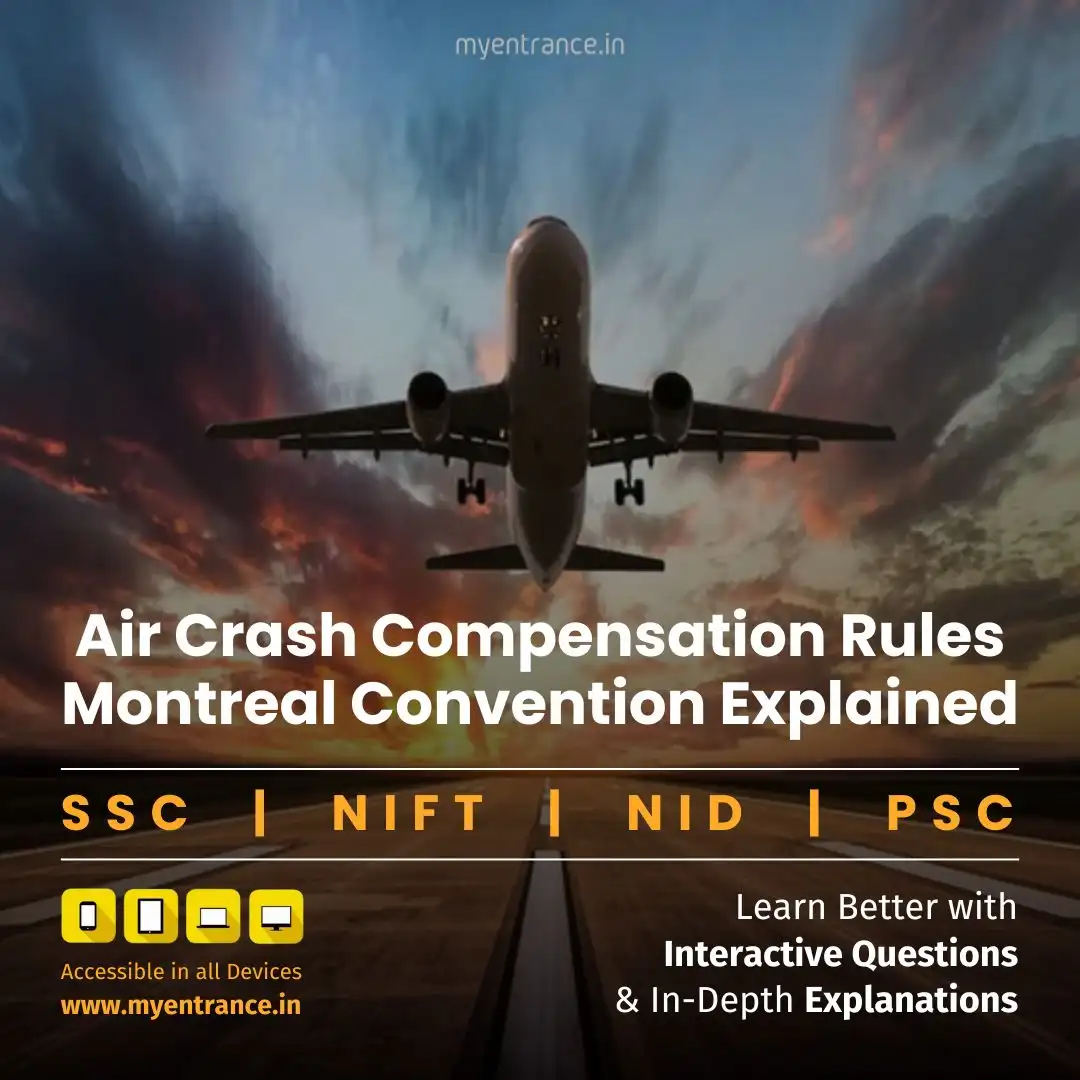Select Language
Ahmedabad Air India Crash: Disaster Management Lessons for Exams
The tragic crash of Air India Flight AI-171 in Ahmedabad highlights critical aspects of aviation safety and disaster management. This incident serves as a crucial case study for competitive exams like UPSC, SSC, and PSC, covering emergency response, legal frameworks, and aviation protocols.
Critical Disaster Management Aspects
1. Immediate Response
NDRF/SDRF Deployment: Rescue teams faced flames and toxic smoke, complicating operations.
Challenges: The densely populated crash site led to structural collapses and hindered evacuation efforts.
2. Medical Triage & Victim Identification
Over 20 injured students were hospitalized, with 5 in critical condition.
DNA testing was initiated for victim identification due to severe burns and disfigurement.
Why Takeoff and Landing Are High-Risk Phases
IATA Data (2005-2023):
Landing phase: Accounts for 53% of aviation accidents (high-speed, low-altitude risks).
Takeoff/initial climb: 14.6% of accidents due to engine failures or stalls.
Cruise phase (57% of flight time): Surprisingly, contributes to less than 0.5% of fatalities due to stable altitude and speed.
Crash Investigation Toolkit
Black Boxes: The Investigative Backbone
Flight Data Recorder (FDR): Logs altitude, speed, and control inputs.
Cockpit Voice Recorder (CVR): Captures pilot communications and alarms.
Why are they called “black boxes”? They are painted heat-resistant orange for visibility in wreckage.
Mayday Calls
The final distress signal sent by pilots before impact helps investigators determine the timeline of failure.
Disaster Mitigation Strategies
Pre-Crash Measures
Enhanced Pilot Training: Simulating takeoff emergencies and engine failures.
AI-Powered Predictive Systems: Monitoring engine health to prevent mid-air failures.
Post-Crash Improvements
Fire-Resistant Aircraft Materials: Reducing post-impact fire risks.
Urban Airport Hazard Zoning: Restricting residential constructions near runways.
Faster Emergency Coordination: Real-time alerts to disaster response teams.
Legal Framework: The Montreal Convention
Governs airline liability in passenger injury/death cases.
Ensures automatic compensation (approx. $170,000 per victim) without requiring proof of airline negligence.
Sample Questions & Answers for Exam Preparation
Q1: Which flight phases have the highest accident risk?
A: Takeoff/initial climb (14.6%) and landing (53%) due to low altitude and limited reaction time.
Q2: What is the role of black boxes in crash investigations?
A: The FDR records flight parameters, while the CVR captures cockpit audio—both help reconstruct the accident sequence.
Q3: How does the Montreal Convention protect air passengers?
A: It mandates automatic compensation (~$170,000) for death or injury, regardless of airline fault.
Q4: Why do post-crash fires reduce survival chances?
A: Toxic smoke causes asphyxiation, and flames block exits within 90 seconds (FAA data).
Q5: Name one disaster management upgrade after the Ahmedabad crash.
A: Urban airport hazard zoning to prevent residential area impacts.
Most Predicted Questions
Comprehensive study materials, Expert-guided tips & tricks, Mock tests and instant results.
Start your SSC, NIFT, NID, FDDI, PSC journey today with MyEntrance, your ultimate online coaching platform.








